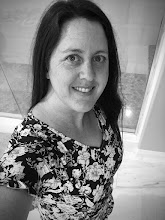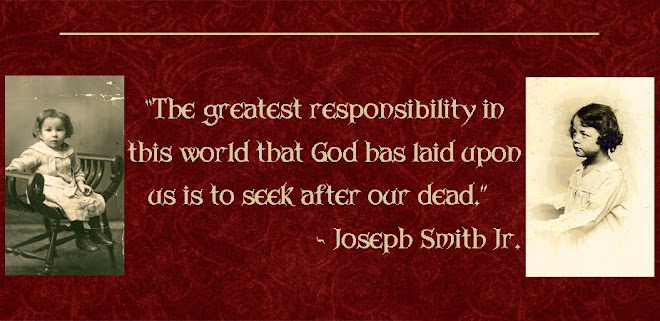“. . . So we went this morning to try to go to mass in the
church in Chodau (now Chodov), so we could see inside the church (it's kept
locked except for mass). But we thought
it started later than it actually did, and we got there too late and mass was just
finishing, so I snapped a picture of the little baptismal font and of the pews,
but didn't even get a picture of the inside of the church before they said we
needed to go out so they could lock up. So that was too bad. But when we were
going back to our car a lady came and invited us to come into the church office
for tea. We went, although we didn't drink any tea of course, and the group of
ladies just chatted with each other while we sat there not understanding a word
of it. But they were very nice to invite us.
 |
| The church in Chodov |
 |
| The pews in the church |
 |
| The little baptismal font. |
Then we came back to the hotel because I realized on google
maps you can right-click on any place on a map and click "what's
here?" and it tells you an address and GPS coordinates. And I double
checked, and for some of the towns it was showing the address with the old
original house numbers from the 1800s when our ancestors were there. And then
last night I realized that for some of the towns, at least the smaller ones,
you are able to just plug in the old address and it can sometimes find it for
you on google maps, instead if having to right-click on every house in a town.
That didn't work in every town I tried, but it did in a few.
So after our adventure at the church in Chodov, we came back
to the hotel and while we listened to General Conference for our church online
on my phone, I looked up houses and prepared maps. By doing that, I was able to
locate Putschirn House No. 7, 17, and 25 (so between going there yesterday and
searching maps we've found all the ancestral houses (that we know of so far) in
that town except house no. 5).
I was
able to find houses 17 & 5 in Imligau (so we've found all but house no. 8
there so far).
I wasn't able to find
house 32 or 34 in Chodov.
But I found
houses 6, 10, & 13 in Wintersgrun, which means we've located all the known
ancestral homes in that town!
I located
Bleistadt (now Olovi) no. 99 on the map too. But didn't find any of the
Graslitz houses on the map because of their numbering system on the different
streets -- still got to figure that one out. So that was pretty productive.
When we finished that, we went to Bleistadt (Olovi), not far
from Graslitz -- Mom hadn't been there before. Apparently the part of Bleistadt that we’d
driven through the previous day was just the edge of town down in the valley,
and the main old part of town was up on the mountain. Bleistadt is a very pleasant mountain town
with great views out over the forest. We couldn't find house no. 99 right away
from the map I'd prepared (and now I'm thinking the map is incorrect), because
we thought to try plugging in the old house number into the GPS in the car, and
it took us up the hill to where there is the old Catholic church surrounded by
homes, a cemetery off to the side, and house no. 99 right across the street from the corner of
the church building. House 99 looked old, but we weren't sure if it was
original or had possibly been rebuilt a long time ago.
Bleistadt No. 99
was the home of my 4th great grandfather, Friedrich Breinl, and his
family at the time of the birth of his son, Adolf Thomas Breinl. My 3rd
great grandmother, Ludmilla Breinl, was Adolf’s older sister – she was 10 years
older than him. Adolf and Ludmilla’s
sister, Anna Breinl, was also born in Bleistadt.
 |
| The Bleistadt church from across the valley. |
 |
| Bleistadt No. 99 (the yellowish house across the street to the right of the church) |
 |
| Bleistadt No. 99 |
 |
| House No. 99 is the yellowish one on the right, with the church steeple beyond it's roof |
The church was nice, and
there were some historic signs outside that we photographed (we will need to
have some of those translated).
 |
| It's extremely rare to find a sign like this with an English translation, especially up in this rather remote mountain village. |
The church was locked and you couldn't see in
at all, but we peaked through key holes in two different doors and could just
barely see that there were dusty pews with red fabric seat cushions, a
chandelier, a metal gate inside the door at the end of the church, and at least
some of the windows were clear stained glass with a little red glass around the
window borders. (Tried to take pictures through the key hole -- didn't quite
work, but you can almost see the benches and a chandelier in the keyhole
pictures). :)
 |
| Look closely: Can you make out the chandelier through the key hole? |
Then we happened to see the little cemetery
not too far from the church when we started to drive away, so we stopped and
walked through the whole thing reading every headstone. We found a few people
with some of our surnames, so we took pictures of those ones.
 |
| The view from the Bleistadt cemetery |
Then we continued on to Graslitz up the road. We drove
through Graslitz for 5 km and just quickly looked around at a town called
Klingenthal across the border in Germany to take a look before
coming back to Graslitz. Because the Breinl family lived in both Graslitz and
Bleistadt at different times, and Bleistadt is 12 miles down the road from
Graslitz in the other direction away from the German border, it got us thinking
that since Graslitz is closer to the border than to Bleistadt, there's always a
chance that the Breinl family could possibly have lived in a German border town
too – will have to look into the possibility of double checking in the German
records too for the ancestors who lived in towns near the border
Then we went back to Graslitz. We tried plugging house
numbers into the GPS, but it didn't work at all. So we still haven't figured
out any house locations there. But we went to the cemetery where our cameras
had run out of batteries previously, and finished searching the cemetery and
photographing the rest of the headstones with family names we had missed
yesterday. There were lots of Huttls, Kohls, Kohlerts, Fischers, Dietz, Meinls,
& Breinls. So that was good to get done, especially since Graslitz is the
furthest family town from here of these ones we've been going to so far.
 |
| These are a few of the headstones we found that day with family names. |
Then we drove home, had dinner, and then skyped with
you. (Or we ‘slumped’ with you -- that's
how my phone wanted to auto-correct the spelling of ‘skyped’). And now I'm just writing you all the details
of my day while I'm falling asleep (so if you get this tonight you know I was
able to stay awake enough to finish)!
Anyway, tomorrow the plan is to go to a local district
archive in Fischern (now Rybare) to look at some Czech census records for my
first time. So that should be an adventure – pray for us that someone at the
archives speaks at least a little English, which would help things run a lot
more smoothly. Then we have plans to go to Putschirn, Imligau, and Wintersgrun
to photograph those other houses I found on the maps. And then if we have time
I'd like to go to a town called Nova Role (formerly Neurohlau), where our
Imligau family went to church and where they were buried. I read online there
is an old church their called St. Michael Archangel Church. Mom has been there
before, once, and she said there are a few headstones by the church, and a
cemetery not far away from there. She
said she remembers not being there for long the one time they were there
before, so I'm wondering if maybe we can find something new in the cemetery
there (it's really cool to see the stuff Mom has found on past trips, but even
more cool when we find something new together. But even if we don't find a
headstone of one of our closely-related ancestors, I will enjoy seeing (and
photographing, of course) the old church. . . .”




























No comments:
Post a Comment